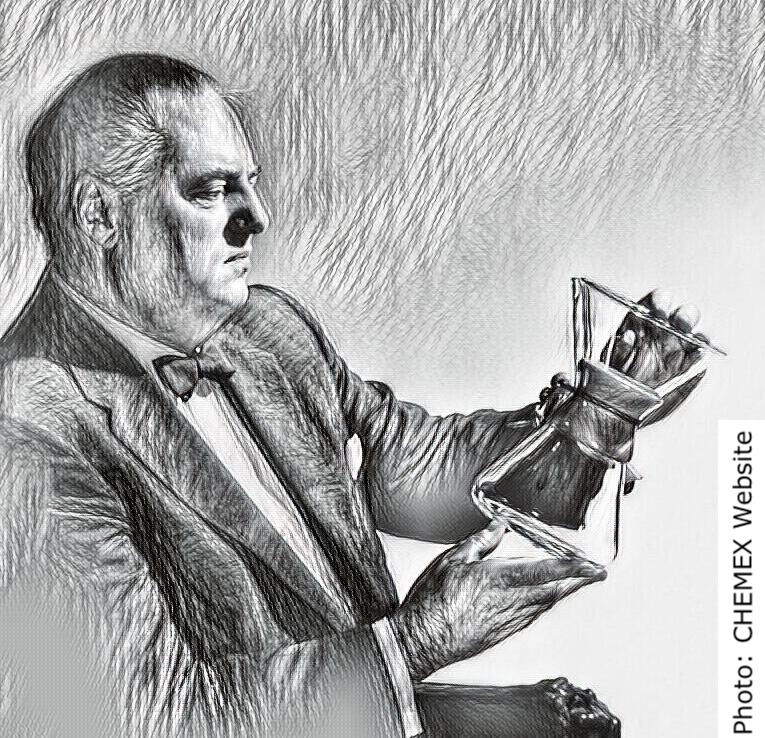Peter Schlumbohm
Beginning around the turn of the 19th century, a movement toward bringing attractive design to everyday household items began to gain momentum. A variety of artisans, manufacturers and product developers churned out a steady stream of innovative products and designs, with the aim of bringing art into everyday life and, of course, hoping to make a healthy profit.
German inventor Peter Schlumbohm, born in Kiel, Germany, on July 10, 1896, set out to make his mark on the quickly modernizing world when he began inventing while a student. He fought in the German army straight out of high school, during World War I, and upon his return from France in 1918 he began his studies in chemistry, completing a PhD in the subject at the University of Berlin. After he graduated he began creating a variety of products, including a color-correcting mirror he marketed to movie theaters in Europe. He also became acutely interested in the subject of refrigeration, and obtained a number of patents in this area.
In 1931, Schlumbohm brought some of his designs to the United States in an attempt to sell patent rights there. He was successful in selling patents for vacuum bottle designs to the American Thermos Bottle Company for several thousand dollars. After this experience, he became intrigued with the U.S. patent system; he relocated to New York City in 1936.
Meanwhile, Schlumbohm patented a diverse array of products and processes from lighting systems to unburnable gasoline. His main interest, however, remained refrigeration. He exhibited a prototype of an “open system” transitory refrigeration cycle device at the New York World’s Fair in 1939. He later attributed his interest in raising capital to support this venture to the commercial launch of his most famous invention, the Chemex coffee maker.
An avid coffee drinker, Schlumbohm set out to design a coffee maker that would be simple, would produce excellent coffee, and would also employ the modernist principles that characterized the era, largely coming out of the Bauhaus movement.
A chemist, Schlumbohm was familiar with the glass Erlenmeyer flasks typically found in the laboratory. Building on this tool, he designed the Chemex in this same heat proof, lab grade borosilicate glass with a graceful hourglass shape. A filter would be placed into the top portion of the hourglass, where the grounds would be held. As boiling water was poured over the grounds it would filter through and drip coffee into the bottom portion of the hourglass. The final design had a pouring groove, level button (a measuring mark), vent and wood handle. Schlumbohm filed for a U.S. patent on the device in 1939; it was awarded in 1941.
Schlumbohm and two partners incorporated the Chemex Corporation in New York in 1939. The company began marketing the product with the tagline "The Chemists' Way of Making Coffee." Within three years, retail giants Wanamakers and Macy’s had agreed to sell the devices; however, World War II created a production challenge for the entrepreneurs. Schlumbohm secured approval from the War Production Board to continue with his plan to mass manufacture the goods; next he signed a production deal with Corning Glass Works to make the devices.
Popularity was immediate. The simple design appealed not only to consumers; it also appealed to the art world. In fact, the Chemex appeared on the cover of the New York Museum of Modern Art’s “Useful Objects in Wartime” bulletin in 1942. Three years later, Schlumbohm designed a carafe kettle using the same basic design, again with borosilicate glass. This too was a commercial success.
The Chemex line was, in fact, Schlumbohm’s only line of commercially successful products, despite the fact that he invented and patented some 300 items over the course of his career, which ended with his death in 1962. The Chemex coffee maker was named one of the best-designed items of modern times by the Illinois Institute of Technology in 1956 and is part of the permanent collections of museums such as the Museum of Modern Art in New York, the Philadelphia Museum and the Smithsonian Institution. Chemex Corp., now based in Pittsfield, Mass., continues to sell the devices to collectors and coffee enthusiasts alike.


